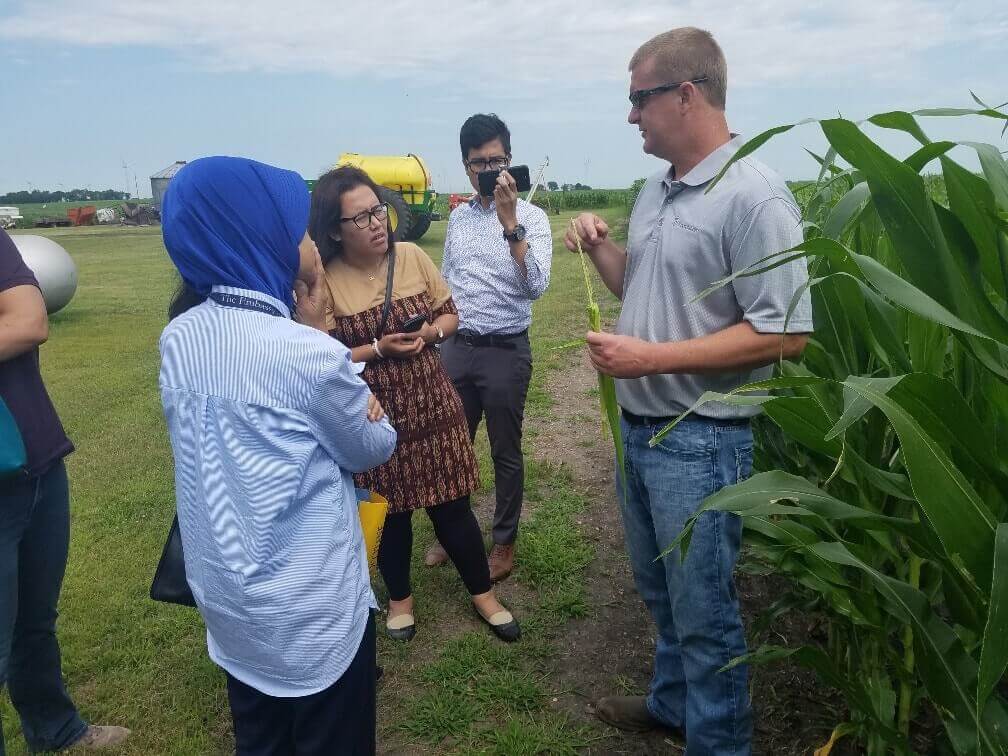 Reading Time: 2 minutes
Reading Time: 2 minutes
(Minnesota Corn Research & Promotion Council member Brandon Fast hosted the Indonesian embassy on his farm)
Minnesota’s corn farmers hosted Indonesian officials on a tour showcasing the state’s sustainable farm operations and ethanol industry, and two years later the fourth-most populous country in the world announced it would be opening its doors to ethanol imports.
Indonesia announced last week that it would for the first time be allowing pre-blended ethanol to be imported into the country. The change creates a potential market of more than 200 million gallons for ethanol, equivalent to 71 million bushels of corn.
The U.S. Grains Council reports Indonesia is expected to grow to the sixth largest global gasoline market within a decade. The key to the growth is rising incomes in the country’s middle class, fueling an increased investment in four-wheeled vehicles. At the same time, Indonesia has set goals to achieve 23 percent of its energy needs from renewable fuels by 2025.
With demand increasing and environmental goals declared, the U.S. Grains Council brought Indonesian officials to Minneapolis in May 2018 for a summit showing how ethanol can help reach those goals while providing cost savings.
Prior to the summit, the Minnesota Corn Growers Association worked with USGC to organize a tour of Minnesota’s ethanol operations with Indonesia and other Asia Pacific countries. The group toured blender pumps at Minnoco and Coborn’s, as well as Al-Corn Clean Fuel, a POET biorefinery and the Flint Hills Resources refinery. MCGA then hosted the Indonesian embassy two months later for a tour of family corn farms, agricultural businesses, and a co-op to demonstrate the quality and breadth of Minnesota’s ag sector.
For USGC Director of Global Ethanol Market Development Brian Healy, the tours were a valuable piece in the puzzle. Healy said the visits allow government officials to see ethanol up close and talk with members of the supply chain to see how the process has worked—knowledge that can be translated back to Indonesia.
“The Minnesota tours moved what was an abstract idea to the recognition that this is a real thing,” Healy said. “It wasn’t too long ago when the United States wasn’t at 10-percent ethanol, so we are able to talk through the policy and the infrastructure, and show each stage of how it has been implemented here.”
The efforts locally accompany work by USGC field staff based out of Kuala Lumpur to strengthen relationships with Indonesia’s oil supplier, department of energy and foreign ag services. Stateside tours and connection building abroad work together to show ethanol is available globally for trade and communicate its economic and environmental benefits.
Healy said the next step in Indonesia is to help the country reach their aspirational goal of E10. The latest development opens the door for gasoline pre-blended with ethanol. One of the larger obstacles in moving to 10 percent is a 30-percent tariff on imported ethanol. A five-year goal for USGC will be to lower that tariff and open the doors for ethanol to be blended with oil produced domestically.


